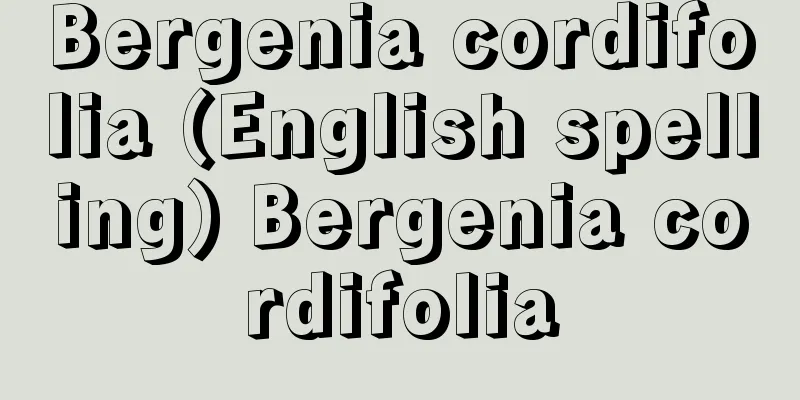Takahashi Korekiyo

|
He was a financier and politician of the Meiji, Taisho and Showa periods. He was born in Edo on July 27, leap year 7 of the Kaei era, as the son of an artist employed by the shogunate, and was adopted by a foot soldier of the Sendai domain. He went to the United States in 1867 (Keio 3) as a student studying abroad with the domain, studied hard, and returned to Japan in 1869 (Meiji 2). After working as an English teacher at Daigaku Nanko, he joined the Ministry of Education in 1873, transferred to the Ministry of Agriculture and Commerce, and was promoted to the position of the first Director of the Patent Bureau. However, he aspired to make a name for himself overseas, and in 1889 he resigned from his position and went to Peru to develop silver mines, but failed. After returning to Japan in 1892, he was recognized by the Governor of the Bank of Japan, Kawata Koichiro, and joined the Bank of Japan, where he served as the Western Branch Manager, Manager of the Yokohama Specie Bank Head Office, and Vice President of the bank, and served as Deputy Governor of the Bank of Japan from 1899 to 1911 (Meiji 44). During that time, he was sent by the government to England to raise funds for the Russo-Japanese War, where he succeeded in raising foreign bonds, and was awarded the title of baron for his achievements. In 1911, he became Governor of the Bank of Japan, but in 1913 (Taisho 2), he became Minister of Finance in the Yamamoto Gonbei Cabinet and joined the Seiyukai Party. From the Taisho to the Showa era, he served as Minister of Finance in each of the cabinets of Hara Takashi, Takahashi, Tanaka Giichi, Inukai Tsuyoshi, Saito Makoto, and Okada Keisuke, and during that time, after the assassination of Prime Minister Hara Takashi in 1921, he also became Prime Minister and President of the Seiyukai Party. In 1924, during the second Constitutional Protection Movement, he gave up his title and his seat in the House of Peers to be elected as a member of parliament, and also became Minister of Agriculture and Commerce in the Constitutional Protection Three Party Cabinet. Takahashi was a dissolute young man, but later in life he was highly trusted as a banker and financier, and in the financial panic of 1927 (Showa 2), he was appointed Minister of Finance as the savior of the financial world in the midst of bank runs, and implemented a moratorium to calm the panic. During the Showa depression from 1930 to the following year, as the country fell into a deep depression and gold outflow continued, he was asked to become Minister of Finance in December 1931, and reinstated a ban on gold exports. He then issued a large amount of government bonds, using them to attract fiscal funds and boost the economy, and introduced a policy of economic adjustment through market manipulation of government bonds, which successfully led to an escape from the depression. However, in order to curb unlimited fiscal expansion, he switched to a doctrine of gradually reducing public debt in 1935, and suppressed the military's demands for increased military spending, which led to his assassination by a young officer in the February 26 Incident the following year. [Tokuko Omori] "Takahashi Korekiyo Autobiography (Chuko Bunko)" ▽ "Takahashi Korekiyo by Imamura Takeo (1948, Jiji Press)" ▽ "Takahashi Korekiyo: The Man Who Survived the Great Depression by Matsumoto Takashi (2009, Chuokoron-Shinsha)" ▽ "Takahashi Korekiyo -- Japan's Keynes" by Goto Shinichi (Nikkei Shinsho)" ▽ "Takahashi Korekiyo -- The Extraordinary Life of a Financier" by Oshima Kiyoshi (Chuko Shinsho) [References] | | | | | | | |©Shogakukan Library "> Takahashi Korekiyo Source: Shogakukan Encyclopedia Nipponica About Encyclopedia Nipponica Information | Legend |
|
明治・大正・昭和期の財政家、政治家。嘉永(かえい)7年閏(うるう)7月27日、幕府御用絵師の子として江戸に生まれ、仙台藩足軽の養子となる。藩の留学生として1867年(慶応3)渡米して苦学し、1869年(明治2)帰国。大学南校の英語教師などを務めたのち、1873年文部省に出仕、農商務省に転じて初代の特許局長にまで昇進した。しかし海外雄飛を志し、1889年官を辞してペルーの銀山開発に出かけて失敗。帰国後1892年川田小一郎(かわたこいちろう)日銀総裁に認められて日本銀行に入り、西部支店長、横浜正金銀行本店支配人、同行副頭取を経て、1899年から1911年(明治44)まで日銀副総裁に在任。その間、日露戦争の戦費を調達するため、政府からイギリスに派遣されて外債募集に成功し、その功により男爵を授かった。1911年日銀総裁に就任したが、1913年(大正2)山本権兵衛(やまもとごんべえ)内閣の蔵相となって政友会に入党した。以来、大正から昭和にかけて、原敬(はらたかし)、高橋、田中義一(たなかぎいち)、犬養毅(いぬかいつよし)、斎藤実(さいとうまこと)、岡田啓介(おかだけいすけ)の各内閣でそれぞれ蔵相を務め、その間、1921年原敬首相暗殺ののち、総理大臣、政友会総裁にもなった。また、1924年の第二次護憲運動で爵位と貴族院の議席をなげうって代議士に当選し、護憲三派内閣の農商務大臣にもなった。高橋は若いころ放蕩(ほうとう)もしたが、後年銀行家、財政家としての信用が厚く、1927年(昭和2)の金融恐慌では銀行取付けの最中に金融界の救世主として蔵相に就任、モラトリアムを施行して恐慌を沈静させた。また1930年から翌年にかけての昭和恐慌では、大不況に陥り金の流出が続くなかで、1931年12月望まれて蔵相となり、金輸出再禁止を断行、続いて大量の国債を発行して、財政資金を呼び水にして景気にてこ入れし、国債の市場操作を通じる景気調節政策を導入して、恐慌からの脱出に成功した。しかし、無制限な財政膨張を抑制するため、1935年公債漸減主義に転じ、軍部の軍事費拡大の要求を抑えたため、翌年二・二六事件で青年将校によって暗殺された。 [大森とく子] 『『高橋是清自伝』(中公文庫)』▽『今村武雄著『高橋是清』(1948・時事通信社)』▽『松元崇著『大恐慌を駆け抜けた男高橋是清』(2009・中央公論新社)』▽『後藤新一著『高橋是清――日本のケインズ』(日経新書)』▽『大島清著『高橋是清――財政家の数奇な生涯』(中公新書)』 [参照項目] | | | | | | | |©小学館ライブラリー"> 高橋是清 出典 小学館 日本大百科全書(ニッポニカ)日本大百科全書(ニッポニカ)について 情報 | 凡例 |
Recommend
Unpenji Temple
A temple in Miyoshi City, Tokushima Prefecture. Om...
Norfolk jacket
A type of sports jacket. There are several theorie...
Sir Isaac Newton
Born 25 December 1642, Woolsthorpe, Lincolnshire [...
Household items - Oimono
It is a type of Joruri and Kabuki script. It is a...
Chelatometric titration - Kire to Teitei (English spelling)
When a metal ion is surrounded by a polydentate l...
Nagayo [town] - Nagayo
A town in Nishisonogi County in the southern part ...
Swamp radish - Swamp radish
A perennial herb of the Asteraceae family (illustr...
Ukita Ikkei - Ukita Ikkei
A painter of the revival Yamato-e school at the e...
Kassala
A city in eastern Sudan. The capital of Kassala St...
Idera Tomb - Idera Tomb
<br /> An ancient burial mound in Ide, Kashi...
Indian Independence Act
This is the basic law that stipulated the indepen...
Jongen, J.
…Especially noteworthy are the musicological achi...
Guanidinium ion - Guanidinium ion
… Guanidine is a strong base (base dissociation c...
Nicholas Kaldor
British economist. Born in Hungary, he graduated ...
extrasensoryperception
...An abbreviation for extrasensory perception. I...









